SAINT ADHERITUS
SAINT ADHERITUS
Saint Adheritus was made bishop of Ravenna. His remains are venerated in the Benedictine Basilica of Classe near Ravenna, Italy. Died: 2nd century, Feastday: September 27.
rosary.team

SAINT ADHERITUS
Saint Adheritus was made bishop of Ravenna. His remains are venerated in the Benedictine Basilica of Classe near Ravenna, Italy. Died: 2nd century, Feastday: September 27.
rosary.team
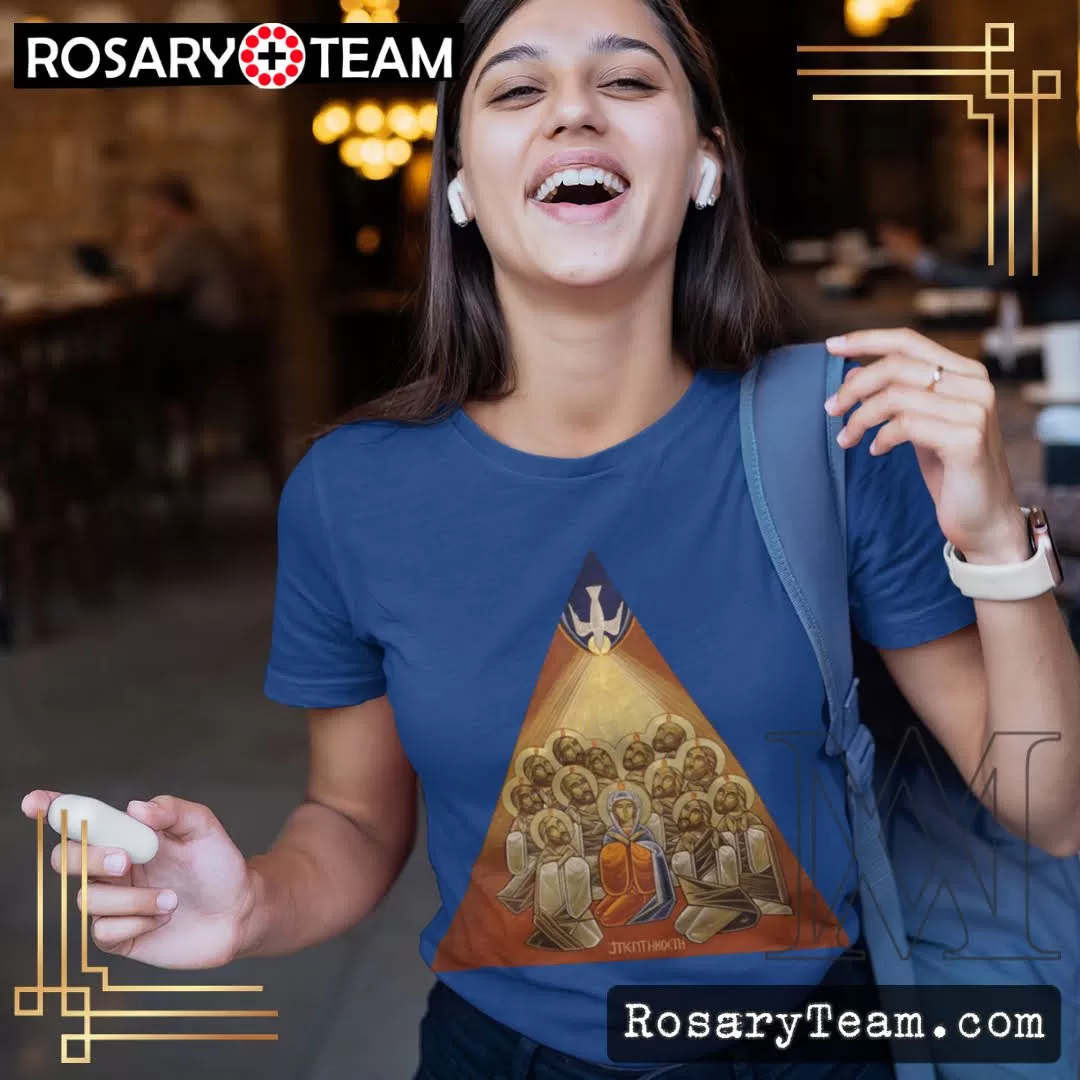
ADRIAN V
Adrian V, Ottobono Fieschi, nephew of Innocent IV, was born in Genoa 1205. His uncle appointed him cardinal deacon of St. Adrian in 1251, and in 1265, Clement IV sent Cardinal Fieschi to England to settle a dispute between Henry III and his barons, who insisted the king should honor the Magna Carta, and to persuade Henry to lead a crusade. The successful cardinal returned to Rome in 1268 and became a leading figure in the Curia. He was elected to the papacy in July of 1276 and died five weeks later, before he was ordained a priest and crowned pope. His only official papal act was to ease Gregory X’s strictures about rationing food during conclaves. Died: 1276.
rosary.team
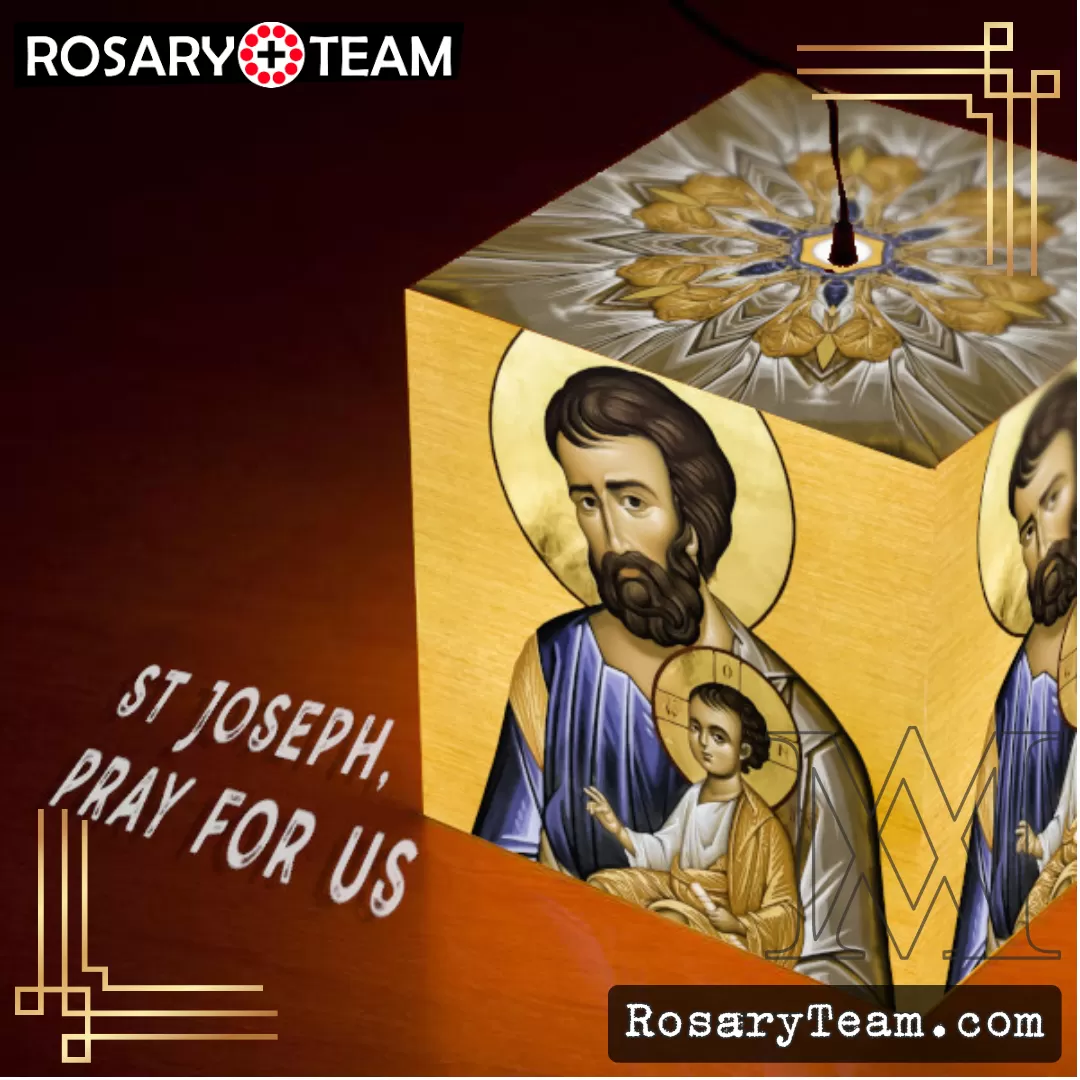
SAINT BALBINA
Martyr baptized by Pope St. Alexander. The daughter of Quirinus the martyr, Balbina died for the faith and was buried on the Appian Way. Her relics were later enshrined in St. Balbina’s Church on the Aventine. Died: 130, Feastday: March 11.
rosary.team

SAINT ADALBERO
A bishop, Adalbero was a Benedictine who influenced his own era. He started his career as a monk in Gorze and was appointed the bishop of Verdun, France in 984. He was transferred to Metz the same year where he founded Cluniac monasteries. Died: 1005, Feastday: December 15.
rosary.team

SAINT BAGLAN
Two Welsh saints bear this flame, Churches have been dedicated to their labors in Wales, and both are commemorated in litanies dating to the earliest Christian eras of that land. Details of their lives have not survived. Died: 5th Century.
rosary.team

SAINT AARON
Saint Aaron, a native of Britain, went to Brittany where he became a hermit on Cesabre (St. Malo) island. Saint Aaron attracted numerous disciples, among them St. Malo of Wales, and became their Abbot. His feast day is June 22.
rosary.team

SAINT ACEOLUS
Martyrs of minor orders. Acius was a deacon and Aceolus was a subdeacon, both probably studying for the priesthood. They were taken prisoner during Emperor Diocletian’s persecution near Amiens, France. Both are revered in Amiens. Died: 303 Feastday: May 1.
rosary.team
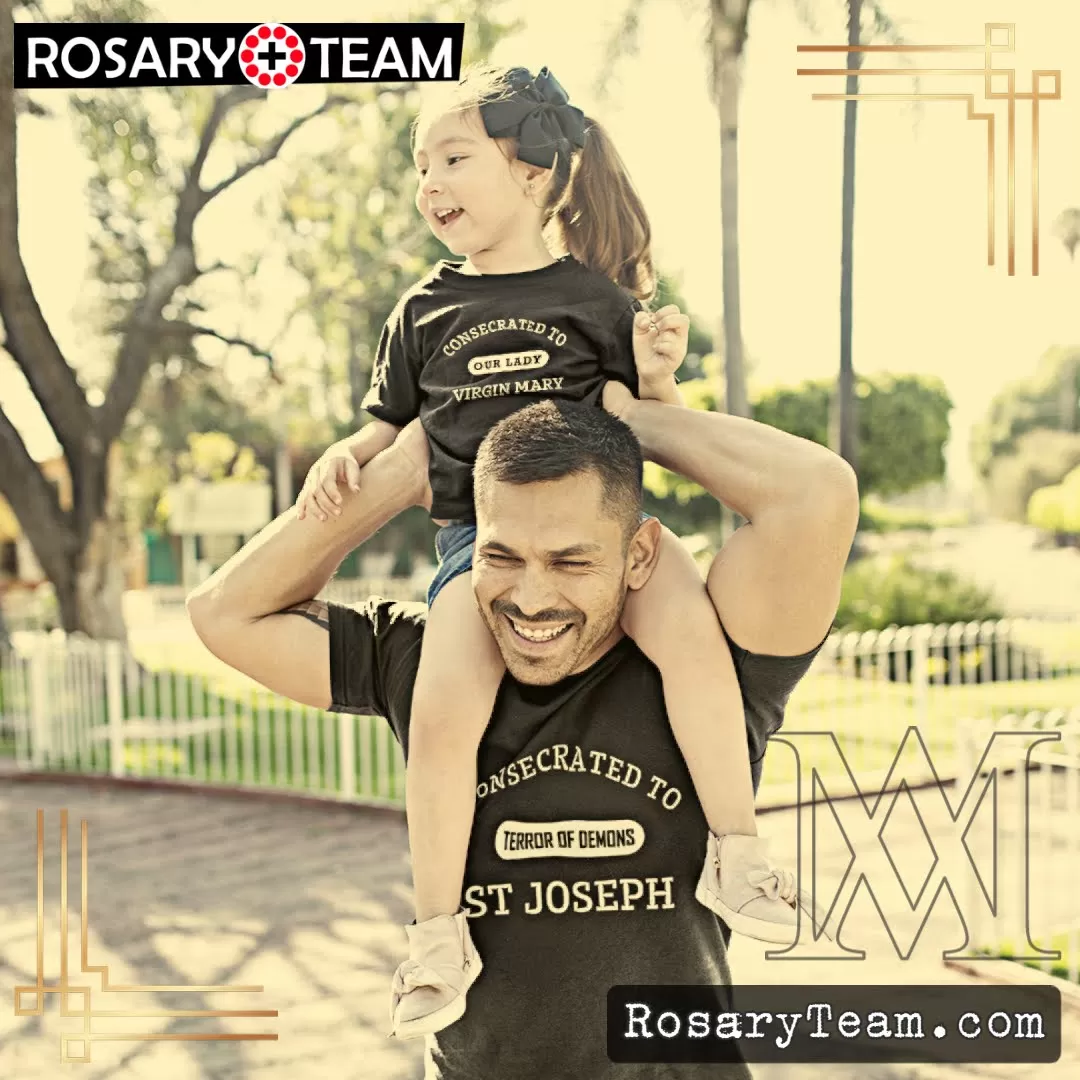
SAINT STEPHEN
One of the first deacons and the first Christian martyr; feast on 26 December.
In the Acts of the Apostles the name
of St. Stephen occurs for the first time on the occasion of the appointment of
the first deacons (Acts, vi, 5). Dissatisfaction concerning the distribution
of alms from the community’s fund having arisen in the Church, seven men were
selected and specially ordained by the Apostles to take care of the temporal
relief of the poorer members. Of these seven, Stephen, is the first mentioned
and the best known.
Stephen’s life previous to this appointment remains for us almost entirely
in the dark. His name is Greek and suggests he was a Hellenist, i.e., one of
those Jews who had been born in some foreign land and whose native tongue was
Greek; however, according to a fifth century tradition, the name Stephanos was
only a Greek equivalent for the Aramaic Kelil (Syr. kelila, crown), which may
be the protomartyr’s original name and was inscribed on a slab found in his
tomb. It seems that Stephen was not a proselyte, for the fact that Nicolas is
the only one of the seven designated as such makes it almost certain that the
others were Jews by birth. That Stephen was a pupil of Gamaliel is sometimes
inferred from his able defense before the Sanhedrin; but this has not been
proved. Neither do we know when and in what circumstances he became a
Christian; it is doubtful whether the statement of St. Epiphanius (Haer., xx,
4) numbering Stephen among the seventy disciples is deserving of any credence.
His ministry as deacon appears to have been mostly among the Hellenist
converts with whom the Apostles were at first less familiar; and the fact that
the opposition he met with sprang up in the synagogues of the “Libertines”
(probably the children of Jews taken captive to Rome by Pompey in 63 B. C. and
freed hence the name Libertini), and “of the Cyrenians, and of the
Alexandrians, and of them that were of Cilicia and Asia” shows that he usually
preached among the Hellenist Jews. That he was pre eminently fitted for that
work, his abilities and character, which the author of the Acts dwells upon so
fervently, are the best indication. The Church had, by selecting him for a
deacon, publicly acknowledged him as a man “of good reputation, full of the
Holy Ghost and wisdom” (Acts, vi, 3). He was “a man full of faith, and of the
Holy Ghost” (vi, 5), “full of grace and fortitude” (vi, 8); his uncommon
oratorical powers and unimpeachable logic no one was able to resist, so much
so that to his arguments replete with the Divine energy of the Scriptural
authorities God added the weight of “great wonders and signs” (vi, 8). Great
as was the efficacy of “the wisdom and the spirit that spoke” (vi, 10), still
it could not bend the minds of the unwilling; to these the forceful preacher
was fatally soon to become an enemy.
The conflict broke out when the cavillers of the synagogues “of the
Libertines, and of the Cyreneans, and of the Alexandrians, and of them that
were of Cilicia and Asia”, who had challenged Stephen to a dispute, came out
completely discomfited (vi, 9 10); wounded pride so inflamed their hatred that
they suborned false witnesses to testify that “they had heard him speak words
of blasphemy against Moses and against God” (vi, 11).
No charge could be more apt to rouse the mob; the anger of the
ancients and the scribes had been already kindled from the first reports of
the preaching of the Apostles. Stephen was arrested, not without some
violence it seems (the Greek word synerpasan implies so much), and dragged
before the Sanhedrin, where he was accused of saying that “Jesus of Nazareth
shall destroy this place [the temple], and shall change the traditions which
Moses delivered unto us” (vi, 12 14). No doubt Stephen had by his language
given some grounds for the accusation; his accusers apparently twisted into
the offensive utterance attributed to him a declaration that “the most High
dwelleth not in houses made by hands” (vii, 48), some mention of Jesus
foretelling the destruction of the Temple and some inveighing against the
burthensome traditions fencing about the Law, or rather the asseveration so
often repeated by the Apostles that “there is no salvation in any other” (cf.
iv, 12) the Law not excluded but Jesus. However this may be, the accusation
left him unperturbed and “all that sat in the council…saw his face as if it
had been the face of an angel” (vi, 15).
Stephen’s answer (Acts, vii) was a long recital of the mercies of God
towards Israel during its long history and of the ungratefulness by which,
throughout, Israel repaid these mercies. This discourse contained many things
unpleasant to Jewish ears; but the concluding indictment for having betrayed
and murdered the Just One whose coming the Prophets had foretold, provoked the
rage of an audience made up not of judges, but of foes. When Stephen “looking
up steadfastly to heaven, saw the glory of God, and Jesus standing on the
right hand of God”, and said: “Behold, I see the heavens opened, and the Son
of man standing on the right hand of God” (vii, 55), they ran violently upon
him (vii, 56) and cast him out of the city to stone him to death. Stephen’s
stoning does not appear in the narrative of the Acts as a deed of mob
violence; it must have been looked upon by those who took part in it as the
carrying out of the law. According to law (Lev., xxiv, 14), or at least its
usual interpretation, Stephen had been taken out of the city; custom required
that the person to be stoned be placed on an elevation from whence with his
hands bound he was to be thrown down. It was most likely while these
preparations were going on that, “falling on his knees, he cried with a loud
voice, saying: “Lord, lay not this sin to their charge” (vii, 59). Meanwhile
the witnesses, whose hands must be first on the person condemned by their
testimony (Deut., xvii, 7), were laying down their garments at the feet of
Saul, that they might be more ready for the task devolved upon them (vii, 57).
The praying martyr was thrown down; and while the witnesses were thrusting
upon him “a stone as much as two men could carry”, he was heard to utter this
supreme prayer: “Lord Jesus, receive my spirit” (vii, 58). Little did all the
people present, casting stones upon him, realize that the blood they shed was
the first seed of a harvest that was to cover the world.
The bodies of men stoned to death were to be buried in a place appointed by
the Sanhedrin. Whether in this instance the Sanhedrin insisted on its right
cannot be affirmed; at any rate, “devout men” whether Christians or Jews, we
are not told “took order for Stephen’s
funeral, and made great mourning over him” (vii, 2). For centuries the
location of St. Stephen’s tomb was lost sight of, until (415) a certain priest
named Lucian learned by revelation that the sacred body was in Caphar Gamala,
some distance to the north of Jerusalem. The relics were then exhumed and
carried first to the church of Mount Sion, then, in 460, to the basilica
erected by Eudocia outside the Damascus Gate, on the spot where, according to
tradition, the stoning had taken place (the opinion that the scene of St.
Stephen’s martyrdom was east of Jerusalem, near the Gate called since St.
Stephen’s Gate, is unheard of until the twelfth century). The site of the
Eudocian basilica was identified some twenty years ago, and a new edifice has
been erected on the old foundations by the Dominican Fathers.
The only first hand source of information on the life and death of St.
Stephen is the Acts of the Apostles (vi, i viii, 2).
rosary.team
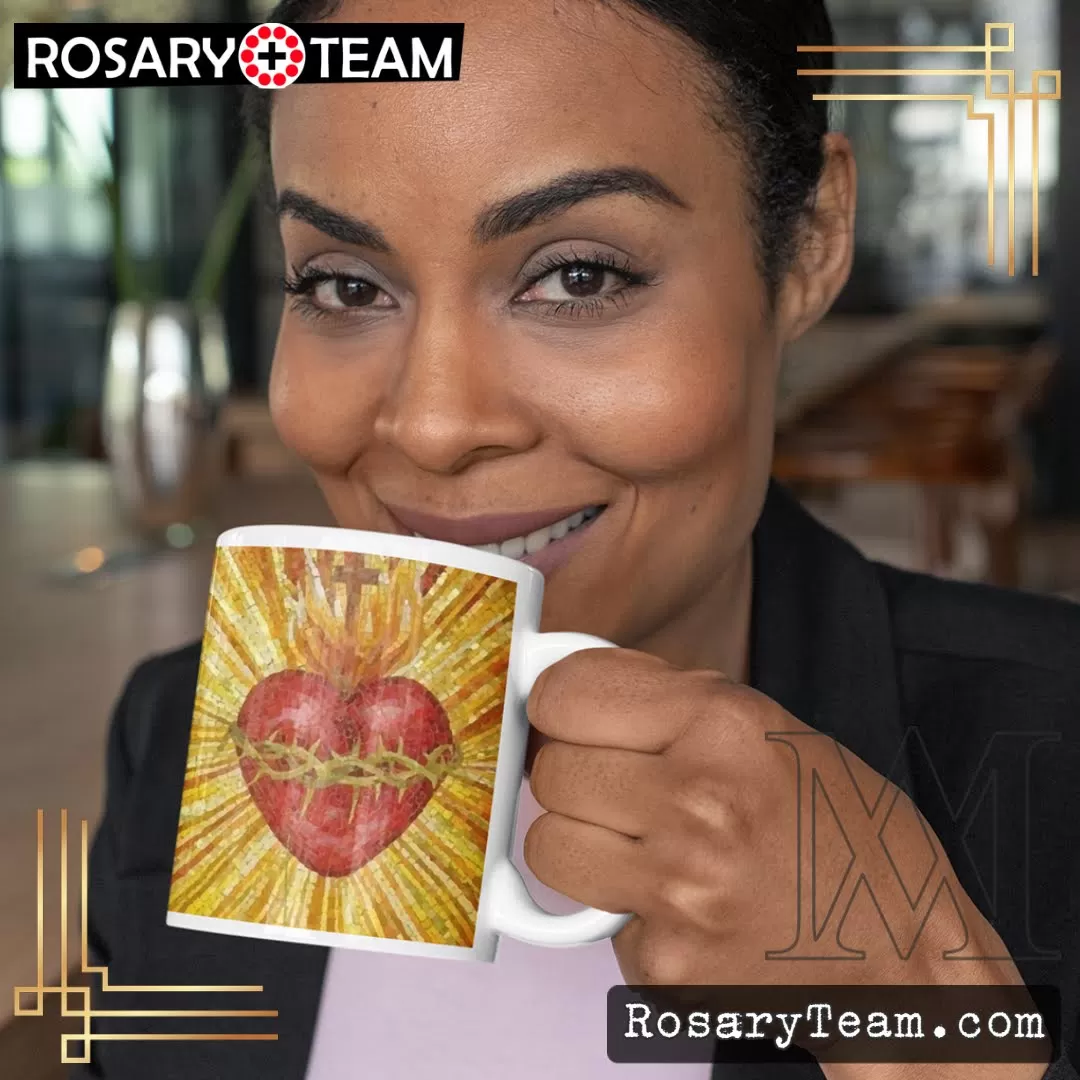
SAINT ADELAIDE
Saint Adelaide became interested in evangelism and established many monasteries and churches. She founded the convent at Seltz where she died. Saint Adelaide was canonized in 1097. Born: 931, Died: 999.
rosary.team
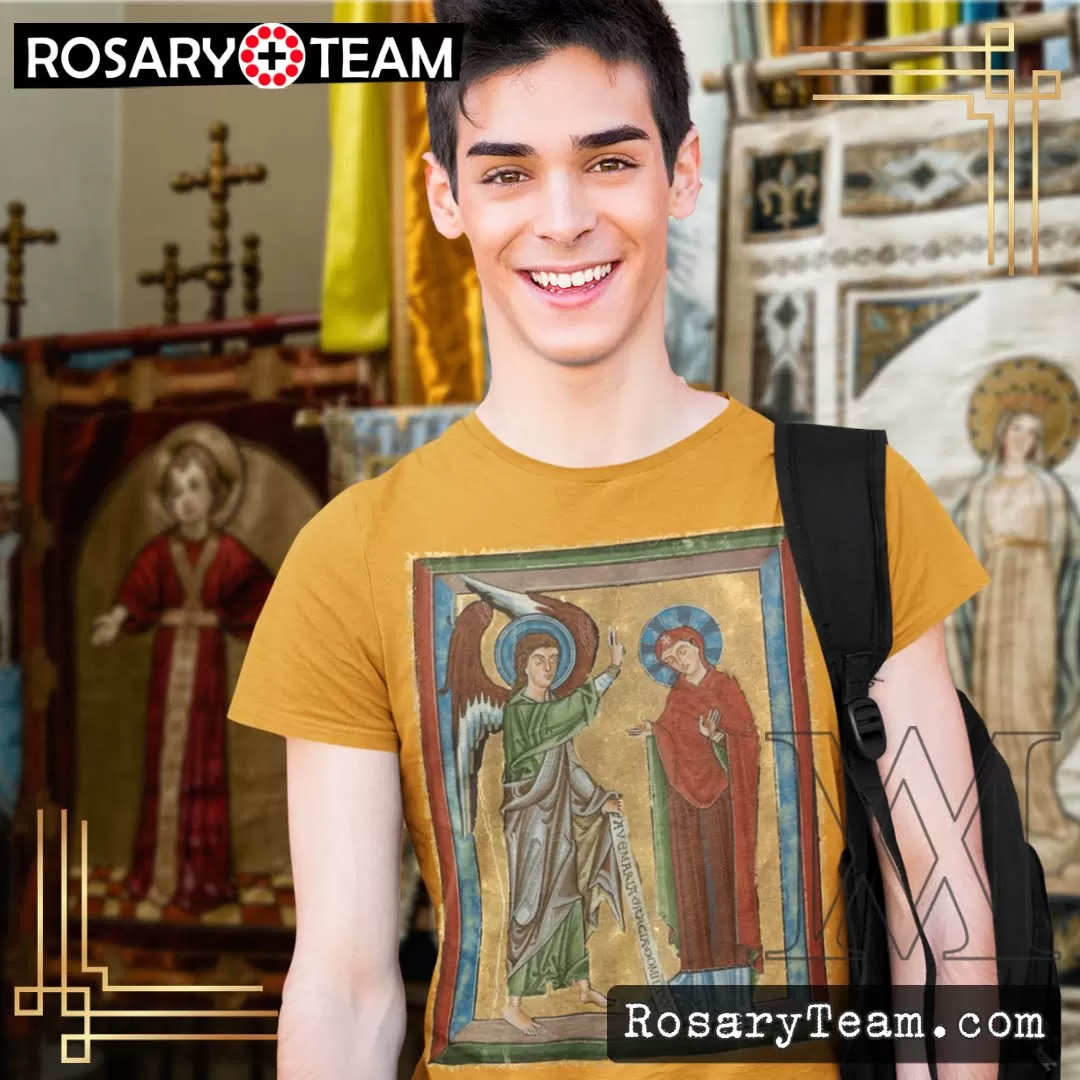
SAINT PADRE MIGUEL PRO
Martyr|
With God|
Reunited|
Operations|
Final Month|
Martyr’s Crown|
Apostle
MODERN MARTYR
Padre Miguel Pro was born to Josefa on January 13, 1891, in the town of Guadalupe, Mexico. Don Miguel and his wife were the happy parents of eleven children. Miguel, Jr., was the third born. Four died in infancy. The two eldest, Maria de la Concepcion and Maria de la Luz, became Sisters of the Good Shepherd. Two of the boys, Miguel and his younger brother Humberto, were martyred. The rest of the children, Ana Maria, Edmundo Jose, and Roberto married.
On the morning of November 23, 1927 without a trace of fear or hesitancy, he walked to the wall, and tranquilly faced the firing squad. He stretched forth his hands in the form of a cross, refused a blindfold, and cried out: “With all my heart I forgive my enemies.” Then, just before the order to fire was given, he quietly uttered the glorious ejaculation of the Mexican martyrs: Viva Cristo Rey! “Long live Christ the King!” Five uplifted rifles, a sharp explosion, silently ascending white smoke puffs, and the beloved Father Jose Ramon Miguel Agustin Pro Juarez, S.J., idol of the Mexican people, fell dead riddled with bullets.
Little Miguel should have been taken to the world beyond, but was miraculously saved. An Aztec woman, who idolized little Miguel, one time fed him a large quantity of fruit, not realizing that it was bad. As a result the small child was stricken with a very serious malady. The sickness
suddenly infected the youngster’s brain. This tragic development caused the doctors to give up hope, saying that he would either die, or live on as an imbecile.
For one whole year Miguel lived on, unable to speak, scarcely recognizing his beloved parents. Finally his condition became acute and death was imminent. His father, who loved his son dearly, was beside himself with grief. Yet trusting with childlike confidence in the Mother of God, he took the lad in his arms, and kneeling down before a likeness of our Lady of Guadalupe, he held out his sick son before the image, pleading for the holy Virgin’s intercession with all his heart:
“Madre mia, give me back my son.”
In the dead silence that followed, the startled witnesses saw Miguel shudder convulsively, come out of his death trance, and vomit up a quantity of blood. Such a spectacular physical manifestation reanimated the doctors, who declared that the child’s recovery was now a strong possibility. A few days later he was completely restored to health, mentally and physically.
BEGINNING TO LIVE WITH GOD
One day, returning from a hunting trip, young Pro decided to beat his companions home by taking a shortcut along the railroad tracks. As he hustled along, he slipped, and to his chagrin, he caught his foot between the rails. Suddenly, a huge freight train appeared down the line, bearing rapidly towards him. Frantically he tugged and tugged, but couldn’t free himself. Then he called upon Mary Immaculate with all his heart, promising works of sacrifice in her honor, should she
deliver him from this terrible danger. Instantly, as he jerked his leg, the boot ripped off from its sole, and the grateful young man ran to safety. Later on, at home, he told everyone that he had felt the imminent approach of death, and had even imagined himself in Purgatory. “Since then,” he noted, “I made a pact with the Blessed Virgin that she would not let me go to Purgatory, and that I would ever be her faithful servant. Ever since, she is my own Lady.”
Years after he entered the religious state, Father Pro recalled the following simple incident as a major turning point in his response to God’s invitation. He said that he had been a wayward boy, but was converted in the following manner: One day he entered a church while a sermon was being delivered on the Passion of Our Lord. The preacher struck a sensitive chord in the soul of the searching teenager who had just then wandered in, when he repeated this most obvious
and yet most forgotten conclusion concerning the agony of the Crucified: “All this, Jesus Christ did and suffered for us, ” he said, pointing to the crucifix, “and we, what are we doing for Him?” “Yes,” thought the young Miguel, “what have I done for Him?” The challenge was like a nail deeply fastened in. He never forgot it, but kept pondering these words in his heart.
Exactly one year after his elder sister had gone into the convent that Miguel approached his father with the news that he had decided to seek admittance into the Society of Jesus. Senor Pro now realized, as he gazed upon his beloved son, why God had spared him as a baby and miraculously restored his health. God gave him back his son so that he could one day give him back to God. but at the time don Miguel had no idea how great a sacrifice God would require of him. How could he know that not many years hence his mischief-making son, now standing in full maturity before his eyes, would be brought back to him, a bullet-ridden corpse. Quietly giving
thanks to God, his father and mother gave him their permission and their blessing.
On August 10, 1911, Miguel Agustin Pro entered the Jesuit novitiate in El Lano, Michoacan. On the day of the Assumption, the fifteenth of August, he was clothed in the Jesuit habit. After the ceremony and Mass, the generous father, who alone had accompanied his first-born son, embraced him once more, and took his solitary departure from El Lano. As he passed through the gate of the Novitiate, he thought to himself: “This is no longer my son; now his Father is God.”
After he had taken his vows in the Society, he recorded the following meditations in his spiritual notebook. The booklet was entitled My Treasure. The words speak for themselves:
Deceitful are the ephemeral pleasures and joys of this world. Our supreme comfort in this life is to die to the world that we may live with Jesus crucified. Let others seek gold and other earthly
treasures. I already possess the immortal treasure of holy poverty on the Cross of Jesus
crucified. The angelic virtue, growing like a pure, fragrant lily in the hidden beauteous garden of the cloister, adorns the forehead with heavenly tints, for it has roots in the Cross of Jesus crucified. A third crown completes my oblation; it is the seal of glory whereby the obedient, spotless Lamb gained victory. Obedience is the secure science of living with Jesus crucified. With this triple treasure, I can hope to pass beyond the fleeting confines of mortal man, by living poor on this earth and rich for heaven, united with Jesus crucified.
REUNITED
WITH HIS MOTHER
After a brief stay in Zamora, Miguel and his three traveling companions went by train to Guadalajara. This station would mark the first stage in a series of moves that would take them half way around the world! It was here also, two hundred and fifty miles north of Mexico City, that the young seminarian found his mother, his sister Ana Maria, and his three younger brothers. They were living in a hut, having fled from the ravaging enemy. The single relic preserved from their home was a beautiful painting of the Sacred Heart which Josefa had managed to carry away from Saltillo. His father’s whereabouts was at that time unknown, since he was
identified with the Huerta regime as agent of the Department of Mines. Being a marked man,
Senor Pro was forced to flee. Little did mother and son realize that those few days of happiness they shared with each other in the family’s Guadalajaran refuge would be the last they would spend together on this earth. Miguel and his companions soon received orders to set out for the United States.
The four seminarians arrived in Los Gatos, California, on October 9, and they were welcomed with open arms. Immediately they resumed their studies, but now, “besides the ordinary problems, there was the special difficulty of their complete lack of books (in Spanish).” One professor had to teach his classes in the library by an ad lib method of questions and answers, far from satisfactory either for the teacher or the students. Problems like this, plus the
disheartening reports from home, combined to accentuate whatever it was that for many years had afflicted Miguel’s stomach, keeping him in almost constant pain. In spite of his sufferings, Miguel still maintained his easy and jovial exterior. His relations with the California Jesuits were extremely cordial, and he had no problem in cultivating lasting friendships with them. None of them could ever forget the enlivening tales and vivid descriptions of Mexico that
sprang from his gay heart in “a charmingly confused mixture of English, Latin, and Spanish words.” Having passed a full scholastic year in California, the Mexican seminarians were shipped to Spain in June of 1915. They arrived in Granada near the end of July. Here in ancient Espana, the land of the mystics, Brother Pro would apply himself to five long years of intense study. Two years were devoted to rhetoric, which is the art of speaking well, and three to the other prescribed courses in philosophy.
THREE PAINFUL OPERATIONS
The stomach ailment that had so troubled Father Pro these many years by now had become very serious. His inability to eat sufficient food soon took its toll on the newly ordained priest’s physical appearance. He looked undernourished and his face was terribly drawn. Only three months after his ordination Padre Miguel was confined to a sanitarium. A humiliating routine of examinations, doctors’ consultations, dieting, and medication upon medication went on for six long months. At. last the physicians came up with the only alternative, surgical intervention. If they didn’t operate, the young priest would die. The first operation was unsuccessful. While he was recuperating from surgery in the Saint Remi hospital in Brussels, he received word that his dear mother had passed away. This was the saddest news of his life. Upon hearing it, he was so stunned that he didn’t shed a tear; he merely listened. After a pause he said, “She is already in heaven; from there she sees me, blesses me, and cares for me; from there she will better watch over me…” Later, at night, when he was all alone, the tears fell in torrents. Another operation had to be scheduled as soon as possible. This time the doctors informed him that they could not risk an anesthetic. Father Pro showed no signs of consternation; he only requested that, if such had to be the case, he be allowed to read his book on Canon Law while they performed whatever they deemed necessary. So into the operating room went this unusual patient with his book on Canon Law! As the surgeons cut and stitched his body he studied his lessons, showing no indication of the excruciating pain that he must have been enduring. After all this, one would think that the problem would have been solved; but no, a third and final operation was deemed necessary, due to the poor results of the second. This last one, however, was more of a success and did somewhat alleviate the pain.
After a period of recuperation in a hospice on the French Riviera, Miguel Agustin Pro received word that he was to return to his homeland. His superiors felt that what medicines and surgery had not been able to accomplish, perhaps the familiar sight of his native soil and his loved ones would. And if not, then at least the heroic young priest would have the consolation of dying at home with his family by his side.
FINAL MONTH
Often Our Lord gives His saints a premonition that the curtain is soon to close on their earthly pilgrimage. Back in September, when he was beginning his Mass for a community of nuns, he asked the angelic flock to pray that God would accept his life as a victim for priests and for the welfare of the Mexican Church. One of the nuns present noted that during the Mass he was totally transported and bathed in tears the whole time they were chanting. At the end of the Holy Sacrifice, he mentioned to someone in the community, “I know not whether it is mere imagination or has actually occurred; but I feel clearly that Our Lord has evidently accepted my
offering.” One could almost see his mother smiling down upon him from Heaven and
repeating those words she had answered him when he was a little boy, “May God hear
you, child. But that is too great a happiness for me.”
The autumn of 1927 found General Alvaro Obregon campaigning for re-election. As was mentioned before, he served in the office of President previous to Calles. Now that the latter’s term was drawing to a close, he threw his support back upon his pal and predecessor. It seems that the two tyrants had agreed to a leapfrog policy of mutual support to maintain each other in power. Then, as a parting gesture, the monster Calles intensified his persecution of the Church to its bloodiest heights. One week in October, the horrified Mexicans saw three hundred of the faithful slaughtered for publicly professing their Catholic religion.
I say that Calles was a monster. Once he had openly boasted, “I have a personal hatred for Christ!” He uttered even worse blasphemies, that should not be printed. And yet, some people will laugh when you try to tell them that there is a real conspiracy against the Catholic Church.
On November 13th, as Obregon and some friends were driving out to attend the bull fights, a car with four men suddenly pulled up alongside the General’s Cadillac. One of the men tossed a homemade bomb atop the official’s vehicle. Shots were also fired. The explosion shattered the windows of the Cadillac, but left no one seriously hurt. Three of the four assailants were captured. One of the three had been mortally wounded by the return fire. However, during the
investigation, it was discovered that the assailants’ car had, only three weeks before the attack, been the property of someone named Humberto Pro.
When they heard the story, Miguel and his two brothers went immediately into hiding. Since the names of Padre Pro and Humberto were already on the proscription list, this latest development, of which they were entirely innocent, would make it impossible for them to appear in public. Upon advice, they hid in the house of a Maria Valdes. Senora Valdes was honored to take care of the brothers. She and her servants both attested to a very unusual phenomenon they had witnessed when attending the future martyr’s Mass in her home. In the words of Dona Valdes: “At the moment of the Elevation, I saw Padre Miguel seemingly transformed into a white silhouette and plainly raised above the level of the floor. I became aware of great happiness…”
After intense questioning and threats the police discovered the whereabouts of the fugitives. At 4 A.M. they invaded the house and found the three brothers sleeping soundly. These were awakened by the shout of “Don’t move, you’re under arrest!” Thinking he was going to be shot on the spot, Humberto said, “I want to go to confession.” The policeman refused permission, but proved powerless to enforce his decision when Padre Miguel calmly took his brother into a private room to absolve him. Robert likewise confessed. They were then escorted triumphantly – like a prize catch – to the station and promptly jailed.
Some reporters were allowed to question Father Pro in the presence of a police officer:
“Are you a priest?”, they asked him.
“Yes, sir, a Jesuit priest…I desire to make no declaration. All I shall say is that I am grateful for the attention shown me by those who arrested me. I am absolutely innocent of this affair, because I believe in right order. I am perfectly tranquil, and I hope that justice will shine forth. I deny unequivocally having taken part in the plot.”
Humberto Pro likewise protested his own innocence. Everyone knew that the Pros were incapable of such an assault. Even Obregon himself positively admitted they were not guilty. Furthermore, three of the assailants were already in custody. That left only one at large. Of the guilty men, a handsome twenty-four year old businessman, Luis Segura Vilchis, who had peacefully turned himself over to the police upon hearing that the Pros were under suspicion, assured the authorities that the good padre and his brothers had nothing to do with the affair.
But the authorities, or I should say Calles, cared nothing for proper evidence. He had his man, Miguel Pro, and there was no way that he was going to let him go. Even a restraining order issued by a judge, and sent to the police on the morning of the martyrs’ execution, was conveniently ignored. The fate of this Jesuit was sealed… He must die. “I do not want forms, but the deed!” shouted the half-mad dictator when the Inspector General of the Police, Robert Cruz, advised him to give the Pro brothers some semblance of a trial for the sake of a legal pretext.
With no chance for a hearing, four men were sentenced to die before the firing squad for attempting to assassinate the incoming President. Two of the men were guilty and admitted it. And the other two were innocent. But unjust sentences must be carried out in a hurry, while the public conscience is in a state of stunned paralysis.
MARTYR’S CROWN
On the morning of November 23, a guard appeared at the cell door and called for Father Pro. Uncertain of what was awaiting him, the brave son of Saint Ignatius got up from the game that he was enjoying with the other inmates, squeezed his brother Roberto’s hand, and then turning to the other prisoners exclaimed, “Good-bye, brothers, till we meet in Heaven!”
The policeman who escorted him out was filled with remorse over the whole affair, and asked his charge to forgive him for his part in this injustice. Father Pro, by now easily guessing his fate, threw his arms around the fficer and said, “Not only do I pardon you, but I am grateful to you, and I shall pray for you.”
The thirty-six-year-old Jesuit was led onto the firing range. He was still squinting, having come from a dark cell into the morning sunlight. But he could see from the outlines before him where he was. The major asked him, in a matter-of-fact way, whether he wished to express any last will. The humble padre answered firmly, “Permit me to pray.” The holy priest then knelt down, totally oblivious to the fact that he was on film and was having his picture snapped repeatedly. He very slowly blessed himself for the last time, kissed the crucifix that he held tightly in his right hand, and with his left hand clenching his Rosary, crossed his arms over his chest. While in this posture he moved his lips in inaudible prayer.
Refusing a blindfold, the prisoner stood erect, and said calmly, “Lord, Thou knowest that I am innocent.” As a last priestly gesture, he raised his consecrated hand, and with it made the Sign of the Cross over the spectators. Then, addressing himself to those who were about to kill him, he said, “May God have mercy on you. May God bless you.”
He walked briskly to the wall, faced the rifles, held out his arms so as to perfectly resemble the Crucified, and exclaimed, “With all my heart I forgive my enemies!” Then just before the order to fire rang out, he quietly, though not provokingly, spoke the immortal ejaculation of the Mexican martyrs, Viva Cristo Rey! The guns sounded, and the cruciform figure of the
nation’s greatest contemporary hero, fell dead, riddled with bullets. To make sure that the victim was no longer living, some modern-day centurion fired a shot at close range into the martyr’s head just to make sure.
Humberto Pro was also executed, along with Luis Segura, and his accomplice Antonio Tirado. Roberto Pro was released but was sent into exile with his father and his sister.
Ana Maria Pro was the only one of her family present at her brothers’ execution. Though she had tried repeatedly to get into the jail to see them, she was roughly pushed outside. When she heard the shots, all she could do was stand beyond the fence and weep, like Our Lady beneath the Cross.
APOSTLE
Hundreds of spectators knelt down in the road as the martyrs’ remains passed by in the ambulance on the way to the hospital. When the bodies were laid out for view Ana Maria was the first to venerate them. Crowds of mourners immediately gathered outside the hospital. Suddenly, an aged man, the father of the martyred brothers, was seen ascending the hospital steps and heard murmuring to himself, “Donde, donde estan mis hijos? Quiero verlos.” (“Where, where are my sons? I want to see them.”)
Leaning over the cold remains of his priest son, the stricken father tenderly pressed his lips to the silent face, and dipped his handkerchief in the blood that still flowed from his head wound. Next, he came to the gallant Humberto, and, bending over him, likewise kissed him. Ana Maria could control her grief no longer and, flinging herself into her father’s arms, wept pathetically. Disengaging her, he gazed affectionately upon his tender little child, for so she appeared to him now, and said with gentle affirmation, “Nada de llorar, hija mia.”
(“There is nothing to weep over, my child.”)
That night the bodies were taken to the Pro home, where lines of mourners waited, even in the street, to pay their respects. Don Miguel, alone, knelt for hours between the caskets, with his arms outstretched, and one hand resting on each corpse. There was no bitterness in his heart, as one might have expected. Rather he had an air of peaceful resignation about him. “Michael was an apostle,” he softly remarked, “and Humberto was an angel.”
On the following day, thirty thousand people swelled the funeral procession. As they silently drove along, flowers were strewn before the martyrs’ path and dropped down from hundreds of balconies. Then the chanting started. Before long, thousands were picking it up. And the thundering roar that shook the capital city on the day that the beloved Padre Pro was buried, was soon echoing all over Mexico: “Long live the martyrs! Long live the Mexican clergy! Long live the Catholic religion! Long live our bishops and priests! Long live the Pope! Lord, if You want martyrs, here is our blood!”
rosary.team